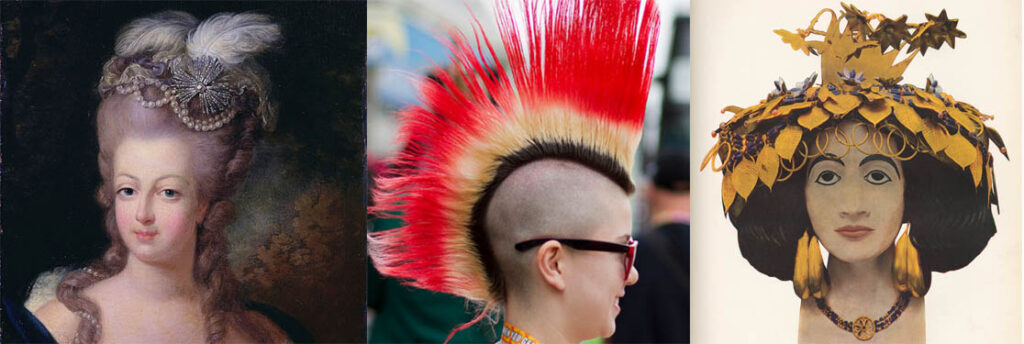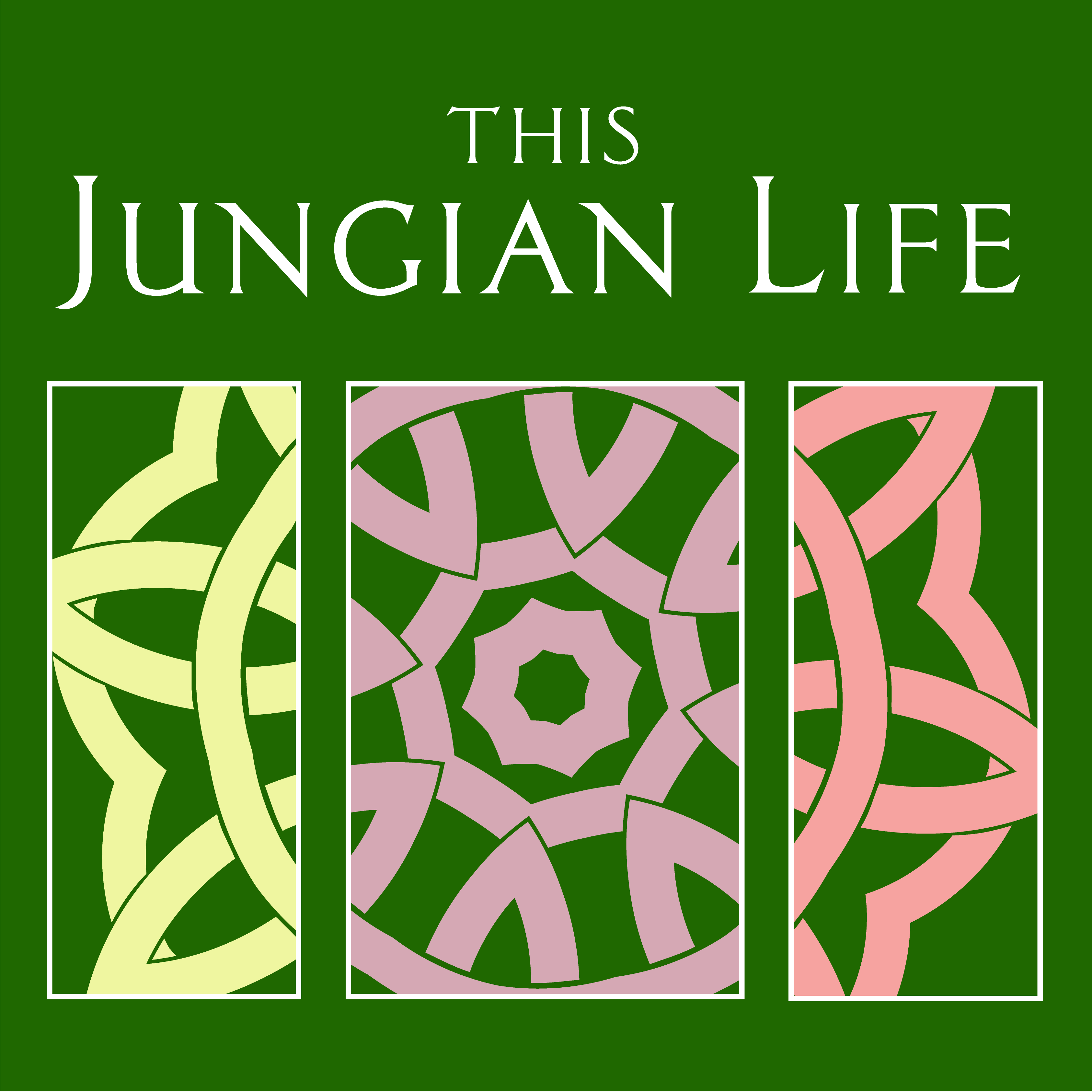
The symbolic meaning of hair, as a prominent feature of human appearance, has played a significant role in the expression of identity, status, and beliefs across cultures and epochs.
In current times it is an expressive medium that each of us shapes to silently communicate our attitudes toward self and others. What do you want your hair to say? Heading out on the town with bed-head might display a carefree indifference to others’ judgments. A carefully quaffed style on prom night might say, “I’m a mature adult now.” Tracing hair’s influence helps us understand underlying psychological patterns that inform our understanding of this powerful symbol.
The significance of hair across time may initially seem irrelevant, yet it can tell us much about ancient values that still influence our self-presentation. Most of us have hair, a remarkably malleable medium, unlike our fingers or feet. It constantly grows so it can be shaped and reshaped over a life span. These universals suggest that hair is also an archetype.
Hair cutting often plays a part in rites of passage. Do a YouTube search on ‘babies first haircut’ and watch how intense the experience can be for both the child and parents. The natural and untouched first locks carry qualities of original innocence, and submitting them to a first cut symbolizes the beginning of many accommodations to the prevailing culture. Because we naturally feel identified with our hair, its voluntary removal can act as a sacrifice. Monks and nuns, in specific orders, shave their heads as a sign of submitting their instincts to religious restraints and returning to an original purity.
Since hair mysteriously grows from our skin, it has often been viewed as an extension of our body, like a limb. It is invested with a kind of primal magic that we feel when we rediscover a lock of our baby’s hair in a keepsake. Literally and figurately, it is an artifact of who they were at a specific moment in time. It defies decay and remains relatively intact on ancient mummies and in Victorian lockets. It is as if part of the body lives on even when separated from it.
Throughout history, hair has functioned as a symbol of rebellion and resistance against social norms. The countercultural movements of the 1960s and 1970s, for instance, saw the rise of long hair and facial hair as a sign of nonconformity and protest against the establishment. Refusing to cut our hair and letting it grow wild and free can coincide with casting off sexual restraints and returning to refreshing natural instincts. Hair continues to serve as a potent symbol of self-expression and defiance in contemporary society, as evidenced by the popularity of alternative hairstyles such as punk, goth, and emo subcultures.
Body hair carries many projections and may be seen as virtuous or demonic depending on the spirit of the times. Our hairy humble brethren, animals, often covered in hair, were once revered as divine and later demonized as dangerous by virtue of their unrestrained impulses. Distancing ourselves from animality through shaving, hiding, or plucking hair ebbed and flowed. In the early 20th century, lack of body hair was associated with feminine beauty, higher moral character, and substantial beards, a sign of masculine virility. The controversial association of hair with sexuality is ingrained in the oppressive tradition of veiling or covering women’s hair in various religious contexts. The practice of covering hair is rooted in the belief that a woman’s hair possesses an alluring power and is concealed to maintain modesty and honor.
In many cultures, hair carries spiritual potency. Sampson, the dread adversary of the Philistines, confessed, “No razor has ever been used on my head…because I have been a Nazirite dedicated to God from my mother’s womb. If my head were shaved, my strength would leave me, and I would become as weak as any other man.” His hair seemed to connect him to God, and its removal left him a prisoner. Heracles helps a friend defend their city with a single Gorgon’s hair, and the ancient Greek philosopher Apollodorus describes mythic characters killed by plucking out a single life-sustaining hair. Sikhism prohibits cutting hair because it is a natural gift from God and wrapping it in a turban is a sign of virtue.
Hair has long served as a marker of identity and social status, with different hairstyles and adornments reflecting one’s rank, tribe, or occupation. In ancient Egypt and Rome, elaborate wigs were a sign of wealth and social standing. Feudal Japan reserved the chonmage, or topknot hairstyle, for samurai, signifying their warrior caste. In medieval times letting hair flow down one’s body, like Rapunzel, signaled women were available for marriage. That fairy tale highlights the symbolism of hair as a means of seduction and sexual awakening. The heroine’s hair serves as a bridge between her tower-bound existence and the outside world, ultimately leading to her union with the prince.
In cinema, hair often functions as a visual shorthand for a character’s identity, growth, or transformation. In My Fair Lady, as Eliza Dolittle integrates high culture, her mop of locks eventually become a queenly work of art topped with a tiara. In “Les Misérables,” Jean Valjean undergoes a dramatic change in appearance, including cutting his hair and beard, to symbolize his transition from convict to a redeemed man of virtue. This transformation echoes the theme of rebirth, in which the shedding of hair signifies the casting off of one’s old self and the emergence of a new identity.
From the political outrage displayed in colorful punk rock spiked hair, to a baby’s soft curling locks, from the painstaking intricate braids and coils of Mesopotamian royalty’s hair to our grandmother’s beehive hairdos, hair continues to fascinate us. It is called to speak for us at first sight and has served as a canvas for expression and communication, reflecting the diverse beliefs, values, and identities of those who wear it.
~ Joseph R. Lee
HERE’S THE DREAM WE ANALYZE:
“I am in the garden of the house where I grew up, looking at a huge blooming flower bed with my mother, who is telling me how to garden while she is away for some time with my father. It is an extremely hot summer day, and she wants me to remember to eat the ripe oranges and yellow tomatoes. When I first look at the tomatoes, I think some of them are rotten, but it tums out that they are perfectly ripe. She also wants me to replant a blackberry bush, which I do immediately. I go inside the house, up the staircase, and get frightened. Suddenly a weird little creature (knee height) crawls up the staircase after me. It is black and has a tiny faceless head on a broader body. I know it is a mutated blackberry. It reaches out for me and begins to crawl my leg, I kick it down, but it keeps coming. It is needy and begins to lick my leg like a tiny dog. It wants me to take care of it, but I don’t want it to depend on me. Finally, I feel desperate and call for my mother’s help.”
BECOME A DREAM INTERPRETER
We’ve created DREAM SCHOOL to teach others how to work with their dreams. A vibrant community has constellated around this mission, and we think you’ll love it. Check it out.
PLEASE GIVE US A HAND
Hey folks — We need your help. So please BECOME OUR PATRON and keep This Jungian Life podcast up and running.
SHARE YOUR DREAM WITH US
SUBMIT YOUR DREAM HEREFOR A POSSIBLE PODCAST INTERPRETATION.
FOLLOW US ON SOCIAL MEDIA
FACEBOOK, INSTAGRAM, LINKEDIN, TWITTER, YOUTUBE
INTERESTED IN BECOMING A JUNGIAN ANALYST?
Enroll in the PHILADELPHIA JUNGIAN SEMINAR and start your journey to become an analyst.

Your discussion of hair as a symbol of life force reminds me that historically witches were thought to be able to call the winds by undoing their braids.
I’m also thinking of a novel. The Sparrow, a first contact situation, where humans go to another planet. The indigenous population has fur and is so fascinated by human hair that they start wearing crowns with ribbons hanging down to simulate hair.
When I was a girl, I read a book where older ladies were described as having blue hair. Even though I knew the blue hair wasn’t a compliment, ever since I’ve wanted to have blue hair as a little old lady. I am approaching that age and, I think, that as I lose the last of my original color, I will dye at least part of my hair blue.
In the dream, I was fascinated by the tomatoes which she thought were rotten but were actually perfectly ripe. To amplify your analysis, this could represent a fear of striking out on her won, but the time is ripe.
I’ve thought a lot about hair as I’ve gone through the years. I’m now 73 struggling with caregiving my husband who had a stroke. I lost a lot at this serious calamity that hit us both. But I dye my hair bright pink to bring joy and playfulness back to our, too often, serious life. 🧡🧡